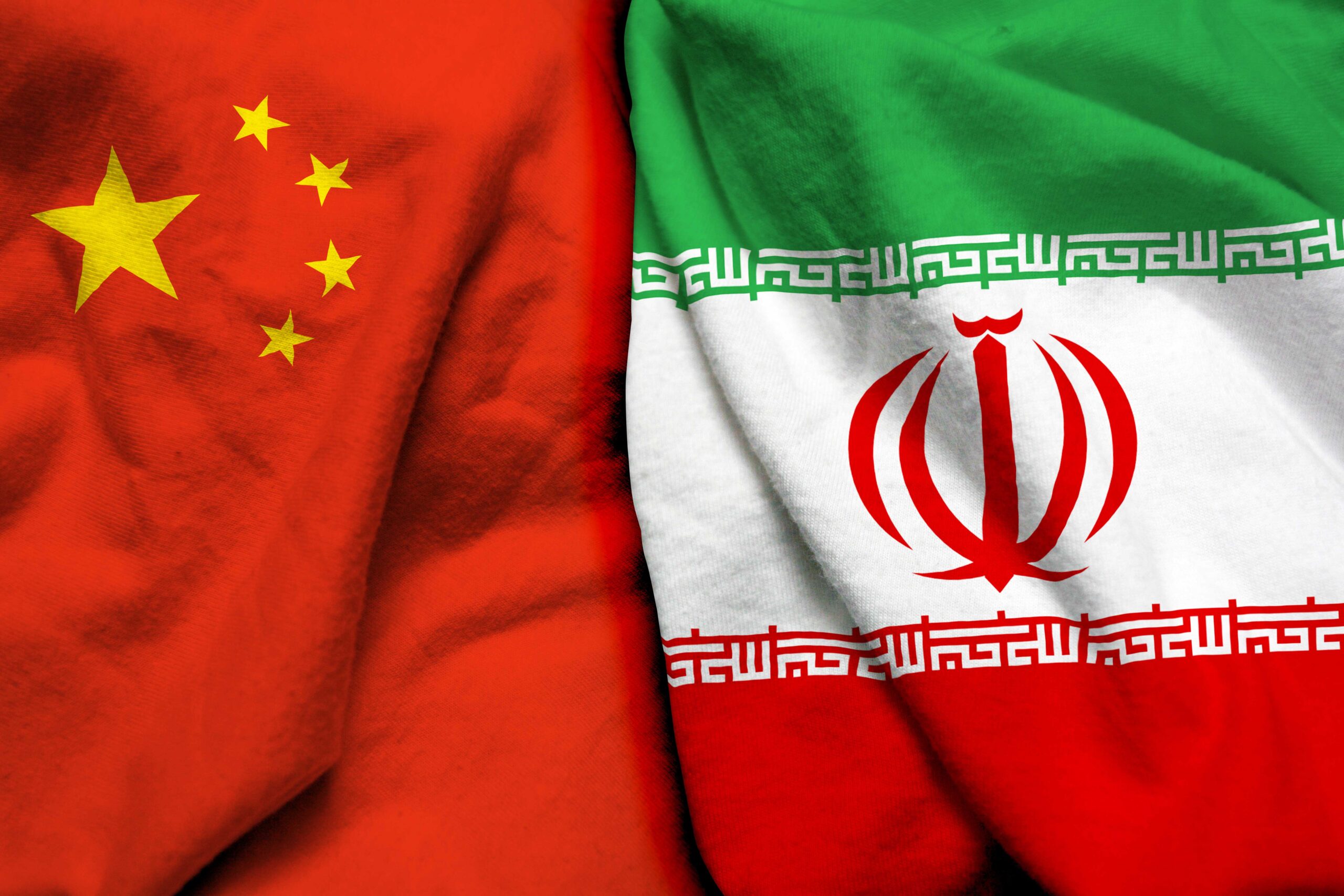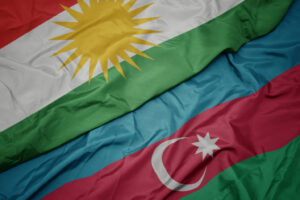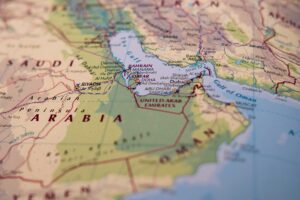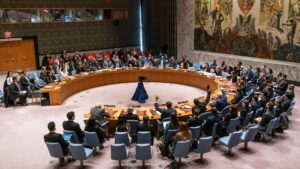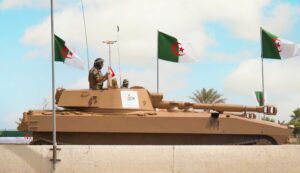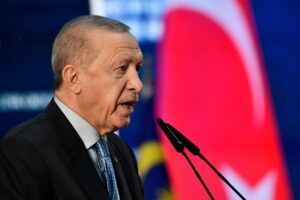The 1979 Iranian Revolution was a seminal moment in Iran’s modern history, not least in shaping its foreign policy scope and practice. Due to its revolutionary nature and emphasis on political Islam, the revolutionary state of Iran set itself in opposition to the West and the liberal order, and its foreign policy was no exception. The new government’s aims were transnational in scope, and included: the rejection of international organizations, the division of the world into ‘the arrogant’ and ‘the oppressed’, the goal of lending support to the global ‘oppressed’ while struggling against ‘arrogance’, and the export of the revolution to other countries. As Fred Halliday argues, the Islamic Revolution in Iran held even more transnational ideals than the Russian and French revolutions, and consequently, its ideological goals aimed at challenging the world order had a particularly high priority in the foreign policy of the Islamic Republic of Iran.[i]
With the domination of hardliners in the various political and economic structures of Iran, it is not possible for reformists to return to power in the near future.
In this context, Iran’s policy of “Look to the East”, which shifted Iranian dependency away from the West in economic, political, and security terms, has been its dominant foreign policy since 1979. The policy of “Look to the East” intensified during Mahmoud Ahmadinejad’s presidency and reached its peak under Ebrahim Raisi. Now, with the domination of hardliners in the various political and economic structures of Iran, it is not possible for reformists to return to power in the near future, which will mean that the “Look to the East” policy will continue and intensify for a long time to come.
“Neither East Nor West” Policy: Words, Not Practice
The policy of negative balancing and non-alignment orientation encapsulated in the words, “Neither East Nor West”, was one of the main slogans of the Revolution and has remained a general and constant principle in Iranian foreign policy.
After the Iran-Iraq war in 1980, Iran paid close attention to global structures in determining its foreign policy. The need to rebuild after the devastation caused by the war, reduce Iranian political isolation at the international system, improve the domestic economy, and recover the staggering costs of attempts to export the Iranian Revolution led to Iran engaging with other countries and trying to attract foreign investment. At this time therefore, Iran paid attention to global coalitions and regional alliances, and did not attempt to pursue close relations with any one country or region.
The Islamic Republic of Iran tried to achieve a kind of strategic cooperation with the US's rival powers, especially Russia and China, in order to advance a confrontational foreign policy with the West.
Yet, although the principle of “Neither East Nor West” is well documented in Iran’s foreign policy rhetorics, in practice, it did not pursue a negative balancing policy and its engagement with the East and the West has never been the same. In a meeting with the Soviet Ambassador on February 24, 1979, Ayatollah Khomeini stated that, “We want to have good relations, economic and political relations with you, and this is subject to (mutual) respect.”[ii] In 1989, Iran decided to improve its relations with Russia, a “less evil”[iii] country, by signing a comprehensive economic protocol with Moscow. Later on, Iran expanded its ties with the Soviet Union within the framework of Gorbachev’s “new thinking”. In fact, the Islamic Republic of Iran tried to achieve a kind of strategic cooperation with the US’s rival powers, especially Russia and China, in order to advance a confrontational foreign policy with the West, especially the United States.
Instead, a “Look to the East”
During the presidency of Mahmoud Ahmadinejad, Iran put its existing practice into a clearly worded policy. Following the failed attempts of Presidents Hashemi Rafsanjani and Mohammad Khatami to establish relations with the West, President George W. Bush’s labeling of Iran as an “axis of evil”, and the growing western pressure on Iran regarding the nuclear issue, sanctions, and human rights issues, Iran moved to pursuing the policy of “Look to the East”.
Iran had realized that the West’s problem with the Islamic Republic was ideational and ideological. This identity and normative conflict with the liberal order prevented the establishment of an institutionalized relationship between Iran and the West, but also made Iran realize that no meaningful technical and economic support from the West would ever reach Iran. Subsequently, American officials have been critical of US policy that isolated Iran. For example, John Limbert, the former Deputy Assistant Secretary of State for Iran in the State Department’s Bureau of Near Eastern Affairs, has criticized US foreign policy for failing to recognize the Islamic Republic of Iran.[iv]
“East” in the policy of “Look to the East” was therefore ideological, as well as geographical. In normative terms, “Look to the East” seeks to unite with ideologies opposed to liberalism, thus confronting the current Western order and norms of the international system led by Europe and the United States. The principles and teachings of the Islamic-Revolutionary identity of Iran after the 1979 Revolution, such as the centrality of Islam in the state’s governing infrastructure and mission, were in clear opposition to liberalism. Moreover, proponents of the “Look to the East” approach believe that the Islamic Republic of Iran, by belonging to Oriental civilization and having cultural, historical and identity commonalities with this region, can more easily form alliances and converge with them. Accordingly, Supreme Leader Ayatollah Ali Khamenei has stated that, “The Islamic Republic should look to the East, not the West. Countries will lose hope in the West or in Europe and Iran has to beg them to no avail.”.[v]
The “Look to the East” In Practice
Iran’s “Look to the East” policy meant the transition from its policy of negative balancing and non-alignment to building alliances with non-western world powers that have similar political structures to Iran, such as Russia and China. This has led to Iran’s complete dependence on these two countries, based on a 25-year agreement with China and a 20-year agreement with Russia.
Though Russia and China are hostile to the United States in the international system, they have a pragmatic policy toward the United States and Europe: they seek to avoid exorbitant costs and military confrontation, and are unwilling to endanger their ties with the West because of Iran.
Yet, there is an imbalance of power between the three nations. This is particularly exemplified in Russia and China’s compliance with international sanctions on Iran over the nuclear issue and their decision to force Iran to accept the results of the talks most recently.[vi] Though Russia and China are hostile to the United States in the international system, they have a pragmatic policy toward the United States and Europe: they seek to avoid exorbitant costs and military confrontation, and are unwilling to endanger their ties with the West because of Iran. Russia and China have extensive trade and economic relations with the US and Europe, which far exceed their economic relations with Iran.
To understand this matter, it should be noted that for Russia, the Persian Gulf region is neither a strategic threat nor an area of strategic interest. The Middle East and the Persian Gulf merely provide an opportunity for Russia to pursue its wider foreign policy goals. Russia exploits the gaps between regional actors to balance them. Thus, Russian foreign policy in the region thrives in a strategic environment in which there is no regional hegemony. If there were a dominant actor in the Persian Gulf and the Middle East – such as a nuclear Iran – the balance between the actors would be taken from Russia. The most favourable situation for Russia, therefore, is to maintain the status quo.[vii] This explains Russia’s support for Iran on the nuclear issue only to the extent that Iran does not become a nuclear power by reaching the nuclear threshold. Thus, Russia and China’s engagement with Iran is limited and means that Iran cannot exercise the hegemonic power it wishes to have in the region.
This does not mean that ties between Russia and Iran, and China and Iran are not close, however. Iran’s full membership of the Shanghai Cooperation Organisation in 2021 is a clear sign of growing ties between the three countries and the strengthening of Iran’s “Look to the East” policy. Russia and China have been able to withstand pressure from western sanctions and threats and lend continued – though not always complete – political and economic support to Iran. Trade and economic relations between China and Iran are strong: Iran views China as an important strategic partner for development, industry and trade, while China views Iran as an important partner for energy supply and the market for Asian products and services.
Conclusion
For Iran, the policy of “Look to the East” means getting help from the two powers, Russia and China, and all three coalescing around a common goal of confronting the West, especially the United States, and western liberal ideals on the international stage. This is borne out of two main strands of international relations thinking in Iran. First, Iran believes that the future of the international system is in the hands of countries such as China and Russia. Second, it perceives that western countries have a fundamental and intractable problem with the Islamic Republic’s ideology and behavior in foreign policy.
Though there exist imbalances between Iran and Russia and China, the “Look to the East” policy, formed out of ideological alignment, economic interests, and political expediency looks set to stay and flourish. Yet Iran’s reliance on Russia and China may hamstring its maneuvering power in foreign policy, and we may see unprecedented levels of influence from Russia and China in Iran’s internal and external affairs in the coming years.
[i] Fred Halliday, Revolution and World Politics: The Rise and Fall of the Sixth Great Power, Duke University Press Books, 1999, p.127.
[ii] Khomeini, Ruhollah, Sahifa Noor, vol. 6, Tehran: Imam Khomeini Publishing House, pp. 219-221, available at: http://www.imam-khomeini.ir/fa/n25406
[iii]Vladimir Sajin, “Ayatollah Khomeini’s behind-the-scenes game with the United States,” Sputnik News, available at: https://ir.sputniknews.com/20191104
[iv] “Iran and the United States: Doomed to Be Forever Enemies?” New York Times, Jan. 20, 2019, available at: https://www.nytimes.com/2019/01/20/opinion/iran-united-states-trump.html
[v] Rakesh Sood, “The negative impact of US sanctions on the look to the east,” September 9, 2021, available at: http://irdiplomacy.ir/fa/news/2005837
[vi] “Reuters reports that Iran agrees with the texts of the Rouhani era; Bagheri: Our position has not changed,” Radio Farda, December 10, 2021, available at: https://www.radiofarda.com/a/iran-withdrew-drafts-agreed-to-continue-based-on-rohani-agreements/31602991.html
[vii] “Which Russia is Iran facing?” Shargh Daily, January 16, 2022, available at: https://sharghdaily.com/fa/main/detail/304267/%E2%80%8C

